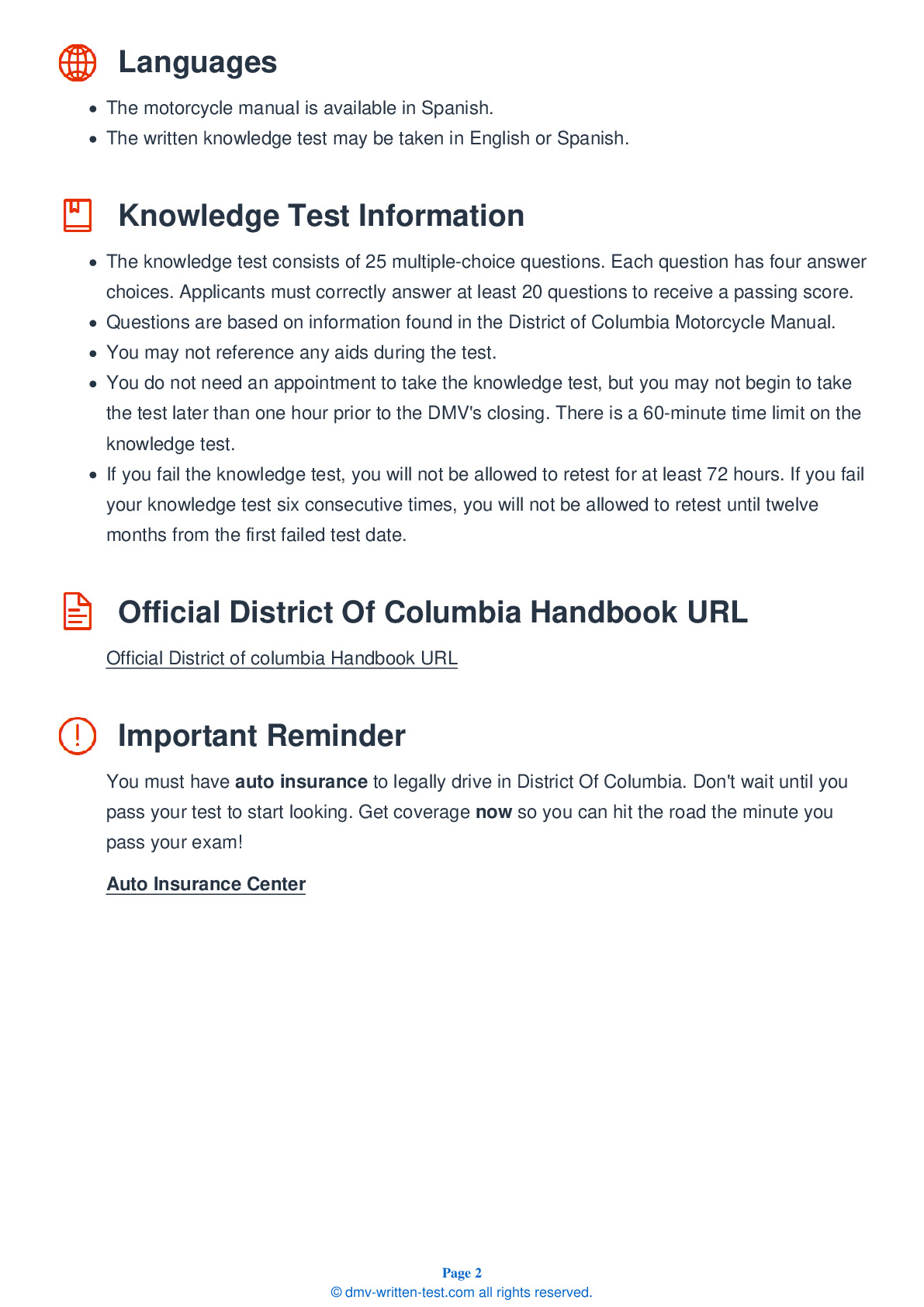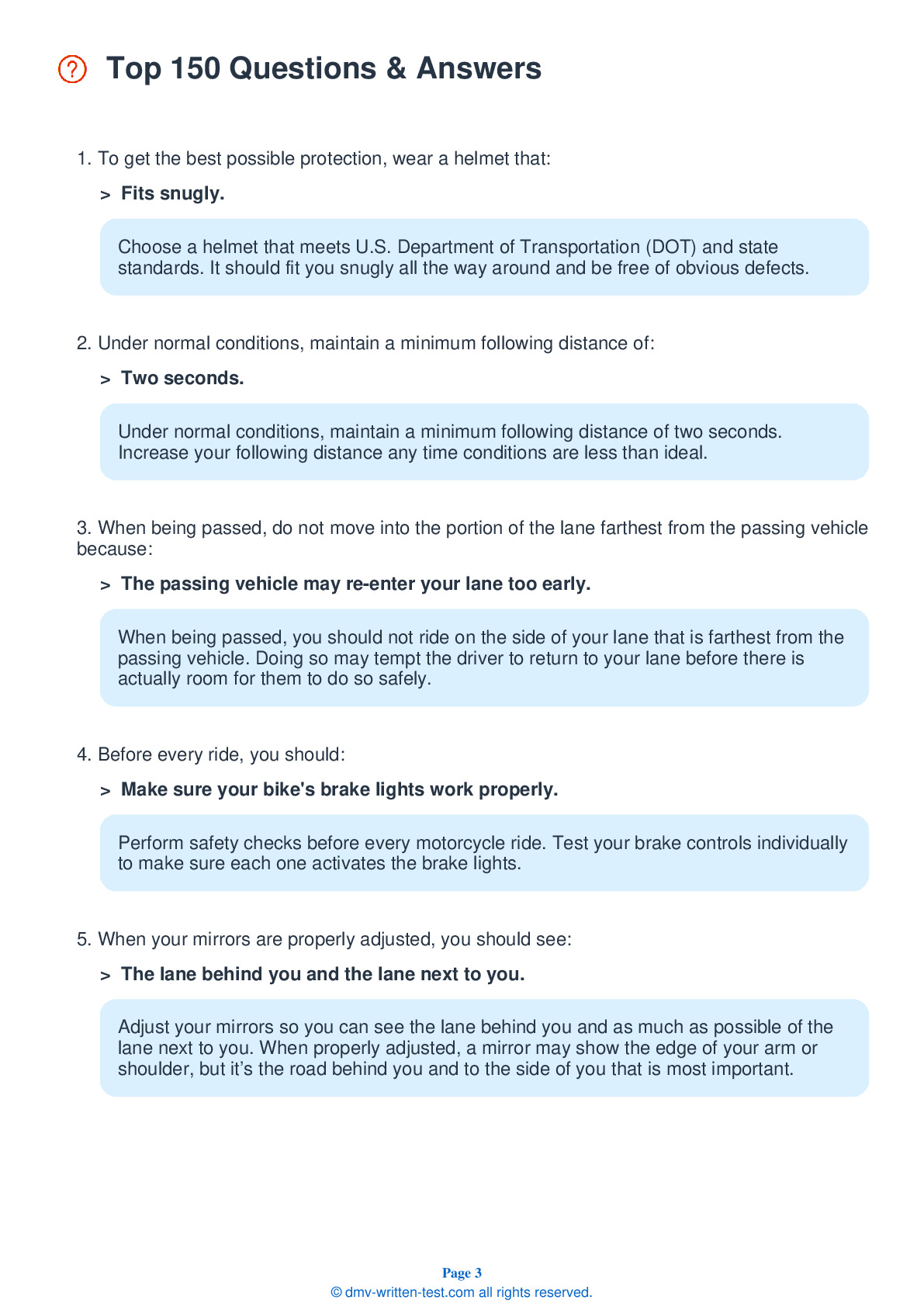2025 District Of Columbia Motorcycle Permit Test 16
The following questions are from real DMV written motorcycle permit tests. These are some of the actual permit questions you will face in District Of Columbia when getting your motorcycle learners permit. Each motorcycle theory practice test question has three answer choices. Select one answer for each question and select "grade this section." You can find this button at the bottom of the drivers license quiz. For a complete list of questions and answers for District Of Columbia please visit https://cheat-sheets.dmv-written-test.com/en/district-of-columbia/motorcycle.
Number of Tests
Number of Question
Passing Score
1. Without a helmet, a motorcycle rider is ________ more likely to suffer a critical head injury in a crash.
Explanation
Without a helmet, a rider is five times more likely to sustain a critical head injury in a crash.
2. The center portion of a lane often contains an oily strip. This strip:
Explanation
Oily drippings from cars collect in a strip in the center of a traffic lane. Unless the road is wet, this area will generally still provide enough traction for motorcyclists to ride safely. Because the strip is usually no more than two feet wide, it is often possible to ride to one side of the strip and still be in the center portion of the lane.
3. Making eye contact with other drivers:
Explanation
You should not rely on eye contact to guarantee that a driver will yield to you. It is not uncommon for a driver to look directly at a motorcyclist and still fail to actually notice them.
4. The Motorcycle Safety Foundation recommends a SEE strategy to make safe judgments while riding. What does "SEE" stand for?
Explanation
Experienced riders use a SEE strategy while riding to make safe judgements. "SEE" stands for Search, Evaluate, and Execute.
5. How can you regain control if your rear tire locks up?
Explanation
To regain control of a locked rear wheel, the brake must be released. However, if you accidentally lock the rear brake on a good traction surface, you can keep it locked until you have completely stopped.
6. When crossing angled railroad tracks, it is usually safest to approach the tracks:
Explanation




